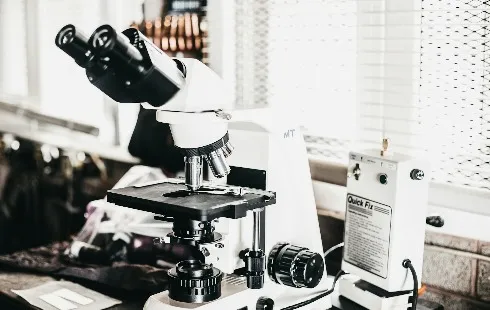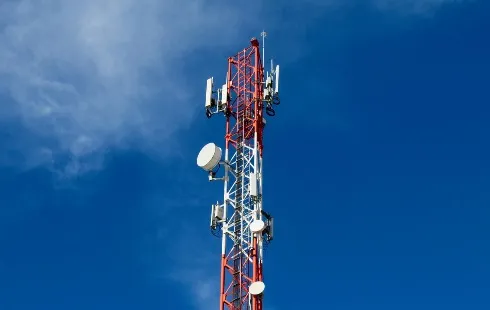
Gonadorelin Peptide: A Gateway to Understanding Endocrine Dynamics
Section: Science
 Gonadorelin, a synthetic analog of the endogenously occurring gonadotropin-releasing hormone (GnRH), has emerged as a molecule of significant interest in peptide research. Composed of ten amino acids, this decapeptide is theorized to be pivotal in regulating the hypothalamic-pituitary-gonadal (HPG) axis. Researchers are uncovering new insights into its properties and implications across diverse scientific domains by exploring its potential impacts on hormonal signaling, cellular processes, and reproductive biology.
Gonadorelin, a synthetic analog of the endogenously occurring gonadotropin-releasing hormone (GnRH), has emerged as a molecule of significant interest in peptide research. Composed of ten amino acids, this decapeptide is theorized to be pivotal in regulating the hypothalamic-pituitary-gonadal (HPG) axis. Researchers are uncovering new insights into its properties and implications across diverse scientific domains by exploring its potential impacts on hormonal signaling, cellular processes, and reproductive biology.
Structural Characteristics and Mechanisms of Action
Studies on Gonadorelin peptide reveal that it is structurally similar to endogenous GnRH, with minor modifications believed to support its stability and functionality in laboratory settings. The peptide is believed to interact with GnRH receptors on the anterior pituitary gland, initiating a cascade of intracellular signaling events. Studies suggest that these interactions may lead to the synthesis and release of gonadotropins, such as luteinizing hormone (LH) and follicle-stimulating hormone (FSH), critical for regulating reproductive processes.
It has been hypothesized that Gonadorelin might exhibit dual-phase activity depending on its concentration and exposure duration. Research indicates that the peptide may stimulate gonadotropin release at physiological levels, while prolonged exposure may lead to receptor desensitization and downregulation. This property positions Gonadorelin as a valuable tool for studying hormonal feedback mechanisms and receptor sensitivity dynamics.
Implications in Reproductive Biology
One of the most compelling areas of investigation involves the peptide's potential role in reproductive biology. Gonadorelin has been explored for its potential to modulate the HPG axis, making it a subject of interest in studies aimed at understanding reproductive endocrinology. For instance, the peptide is believed to investigate the mechanisms underlying ovulation, spermatogenesis, and hormonal regulation in mammalian research models.
Gonadorelin has been hypothesized to influence follicular development and luteal phase dynamics in ovarian function. Research indicates that the peptide might provide insights into regulating ovarian cycles and the factors contributing to reproductive science by modulating LH and FSH secretion. Similarly, in male reproductive research, Gonadorelin is thought to study the regulation of testosterone synthesis and spermatogenic processes.
Insights into Endocrine Disorders Research
Gonadorelin has also been investigated for its potential implications in studying endocrine disorders. It has been hypothesized that the peptide might be a diagnostic tool for assessing pituitary function and gonadotropin secretion. Investigations purport that by giving Gonadorelin in controlled laboratory settings, researchers may evaluate the responsiveness of the HPG axis and identify potential disruptions in hormonal signaling.
Additionally, the peptide's potential to modulate gonadotropin release has made it a subject of interest in studies focused on conditions such as polycystic ovary syndrome (PCOS) and hypogonadotropic hypogonadism. Investigations purport that Gonadorelin might provide insights into the underlying mechanisms of these disorders and contribute to the development of targeted interventions.
Implications in Cancer Research
Beyond its possible role in reproductive and endocrine studies, Gonadorelin has been explored for its potential implications in cancer research. It has been hypothesized that the peptide might influence the growth and proliferation of hormone-sensitive cancer cells, such as those found in breast and prostate cancers. Gonadorelin seems to contribute to studying cancer cell biology and developing novel research strategies by modulating gonadotropin release and downstream hormonal signaling.
In research models, the peptide has been associated with changes in the expression of hormone receptors and growth factors. These findings suggest that Gonadorelin might be a significant tool for investigating the molecular mechanisms of hormone-dependent cancers and exploring the interplay between endocrine signaling and tumor progression.
Emerging Research Directions
While much of the research on Gonadorelin has focused on its possible role in reproductive and endocrine processes, emerging studies are beginning to uncover its potential in other domains. For example, the peptide's potential impact on neuroendocrine signaling is an area of growing interest. It has been hypothesized that Gonadorelin might impact the regulation of stress responses and circadian rhythms, which may have implications for understanding the interplay between the nervous and endocrine systems.
Another intriguing area of investigation involves the peptide's alleged role in metabolic regulation. Research indicates that Gonadorelin might interact with pathways associated with energy balance and glucose metabolism, opening up new possibilities for studying metabolic integrity and its relationship with hormonal signaling.
Challenges and Future Perspectives
Despite the promising findings, several challenges remain in the study of Gonadorelin. One of the primary challenges is elucidating the precise mechanisms through which the compound may exert its impact. Further investigations are required to identify the molecular pathways involved and to determine how these pathways can be leveraged for scientific purposes.
Another area of interest is the development of Gonadorelin analogs with better-supported stability and specificity. These analogs may provide researchers with more compelling tools for studying Gonadorelin's properties and exploring its potential implications in various domains.
Conclusion
Gonadorelin peptide represents a fascinating molecule with diverse properties and potential implications in scientific research. Findings imply that Gonadorelin may offer a unique perspective on the complex interplay between hormonal regulation and biological systems, from its potential role in reproductive and endocrine studies to its implications for cancer research and neuroendocrine signaling. As investigations uncover its multifaceted impacts, Gonadorelin holds potential as a significant tool for advancing our understanding of biology and addressing critical scientific challenges.
References
[i] Plant, T. M., & Zeleznik, A. J. (2015). Physiology of GnRH and gonadotropin secretion. In K. R. Feingold et al. (Eds.), Endotext. MDText.com, Inc.
[ii] Zhou, X., et al. (2019). The pulsatile Gonadorelin pump induces earlier spermatogenesis in men with congenital hypogonadotropic hypogonadism compared with cyclical gonadotropin therapy. Frontiers in Endocrinology, 10, 697.
[iii] Janakiram, N. B., et al. (2014). Raloxifene and antiestrogenic Gonadorelin inhibit intestinal tumorigenesis by modulating immune cells and decreasing stem-like cells. Cancer Prevention Research, 7(6), 547-557.
[iv] Moenter, S. M. (2022). Neuroendocrine control of gonadotropin-releasing hormone. Frontiers in Neuroendocrinology, 64, 100972.
[v] Di Cosimo, S., et al. (2019). Treatment of breast cancer with gonadotropin-releasing hormone analogs: An overview. Frontiers in Oncology, 9, 500.

Section: Science

Section: Health

Section: Arts

Section: Health

Section: Science

Section: News

Section: News

Section: Health Insurance

Section: Health

Section: News
Health Insurance in Germany is compulsory and sometimes complicated, not to mention expensive. As an expat, you are required to navigate this landscape within weeks of arriving, so check our FAQ on PKV. For our guide on resources and access to agents who can give you a competitive quote, try our PKV Cost comparison tool.
Germany is famous for its medical expertise and extensive number of hospitals and clinics. See this comprehensive directory of hospitals and clinics across the country, complete with links to their websites, addresses, contact info, and specializations/services.
What do you get when you blend the tradition of American stand-up comedy with themes that are anything but funny? Pair that with a captivating performer and author like Claus von Wagner, and you're guaranteed a fantastic evening. Projekt Equilibrium is his latest program, which explores the quest...



No comments yet. Be the first to comment!